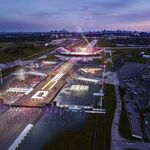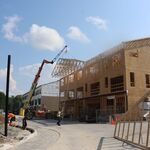A very small fraction of Ontarians — roughly one per cent — have been infected by
the novel coronavirus, according to new antibody blood-testing data from the province’s public health agency.
The findings suggest that the true number of people sickened by COVID-19 in Ontario is closer to 160,000, more than four times the official tally. While that might sound high, it actually means the province is doing a “fantastic” job at catching infections, one epidemiologist says — and a much better job than other jurisdictions. Recent U.S. research has estimated the true caseload there at six to 24 times higher.
The presence of antibodies to the virus was higher in certain age groups and some parts of the province, including Toronto, according to
the Public Health Ontario study. But the overall low numbers attest to Ontario’s success in stifling the initial wave of the pandemic, the scientists say.
“When you think about what the numbers mean, it really suggests that our social distancing and our public health measures have been really effective at preventing widespread infection in the population,” said Shelly Bolotin, a Public Health Ontario scientist and University of Toronto professor who led the study.
She noted, however, that this study could not compare antibody prevalence across different income or demographic groups; the blood specimens were stripped of identifying details before analysis. Data from multiple sources has shown the pandemic is exacting
a disproportionately high toll on low-income and racialized Ontarians.
And the downside of low antibody prevalence is that nearly the entire population of Ontario carries no immunity to COVID-19. Even for those who do test positive for antibodies, researchers still don’t know how long or strong their protection will be.
“It also reminds us that we’re still vulnerable,” Bolotin said. “We’ve done well so far, but we need to really be vigilant about continuing to maintain these public health precautions.”
The estimates were obtained by gathering 8,902 blood samples sent to Public Health Ontario’s Toronto lab between March and June to be tested for other diseases. The specimens were then re-analyzed to detect antibodies to SARS-CoV-2, the virus that causes COVID-19.
The presence of antibodies, a product of the body’s immune system, suggests that a person has been infected to the virus. The relationship between severity of illness and the concentration of antibodies in a patient’s blood is still an evolving area of research, but Bolotin said the threshold the study used was likely to capture people who were infected but had no symptoms, one of COVID-19’s more dastardly features.
Because health-care services were so severely curtailed at the height of the pandemic, far fewer specimens were collected in the earlier months — 827 in the March-April and 1,061 in May. In June, however, the researchers were able to access 7,014. As a result, comparisons between the earlier and later time periods should be made with caution.
Nevertheless, the number of specimens with detectable antibodies was consistently low: just 97 total tested positive.
The researchers’ estimate for SARS-CoV-2 antibody prevalence across Ontario in June, the most reliable period because of the large number of specimens, was 1.1 per cent. It was 0.5 per cent in March-April and 1.5 per cent in May. (The estimates were adjusted to compensate for the test’s tendency to miss about one in 10 positives and to be representative of Ontario’s population.)
In the June samples, the researchers found that those over age 80 had the highest prevalence of antibodies, at 2.6 per cent, while the five to nine year olds had none. Bolotin noted that the researchers are less confident about their findings for children: because healthy children rarely get blood drawn, they had fewer samples to work with, and the samples they did have are probably not representative of the pediatric population.
Bolotin said Public Health Ontario will be publishing new antibody survey reports at regular intervals, and hoped to track this data in children as schools reopen. Researchers believe that kids may also be under-identified using the typical viral-genetic testing, known as PCR, because they are more likely to have a mild or asymptomatic case of COVID-19.
“Our estimates are very, very low for children in this report. How is that going change in the fall? . . . we may be able to capture it, if we get enough of a signal with these samples,” Bolotin said.
The percentages of antibody prevalence differed by geography, too. Toronto and the “Central East” portion of Ontario, which includes Peel Region, both had estimates of 1.5 per cent. In Toronto, that means the true caseload is likely closer to 44,000 than the official count of 15,400.
Dr. David Fisman, an epidemiologist at the University of Toronto’s Dalla Lana School of Public Health, said that catching one in three COVID-19 cases is “fantastic.” His own analyses of published antibody blood surveys have suggested that globally, only about seven per cent of the true number of infections are being identified.
“Given some of the struggles we’ve had with testing, and the restrictions on testing, I think it’s quite remarkable that we identified one-third of cases,” Fisman said.
In New York City, one of the hardest-hit cities in the pandemic, data from antibody blood surveys has estimated that approximately 23 per cent of residents have been infected by the novel coronavirus, 10 to 12 times higher than reported case counts. A recent study estimated that in Missouri, true case counts are 24 times higher...





